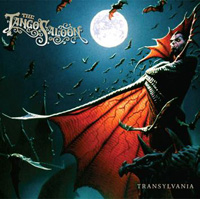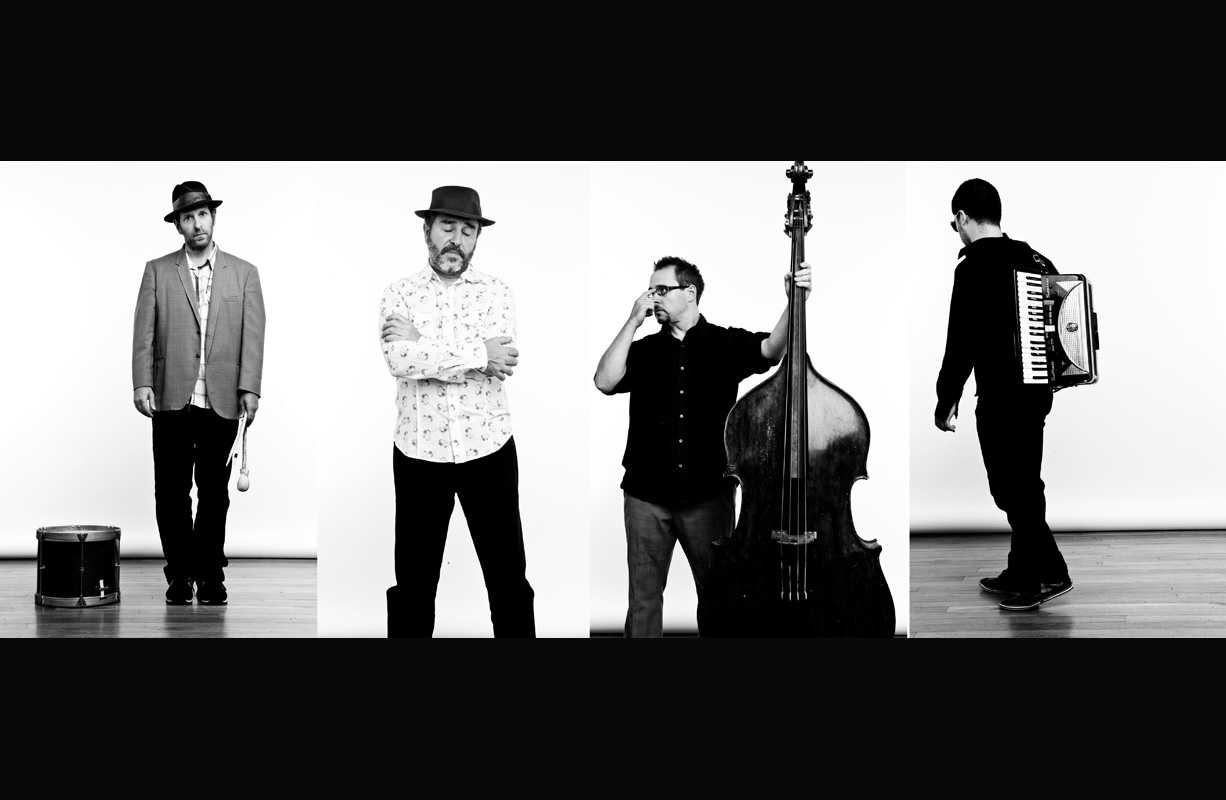The Tango Saloon: “Transylvania”
[audio:https://alarm-magazine.com/wp-content/uploads/2010/10/The_Tango_Saloon_Transylvania.mp3|titles=The Tango Saloon: “Transylvania”]

Some artists seek pleasure, some seek fame, and a rare few fall in love with the very process of creation. “My grand plan is just to keep making music,” muses multi-instrumentalist Julian Curwin, and his plan seems to be working. A veteran of the Sydney jazz and experimental scenes, he divides his time between Monsieur Camembert, Darth Vegas, Gauche, The Fantastic Terrific Munkle, and his personal project, The Tango Saloon.
Dancing its way through an expert blend of styles, The Tango Saloon creates a contemporary tango fit for barrooms and brothels, lounging comfortably in any international port of call. Gypsy jazz runs smoothly into tenacious Latin rhythms; soulful accordions add an old-world touch, while elegant electronic atmospherics anchor the sound firmly in the 21st Century.
Achieving this rare synthesis requires musical manpower, and the group’s first album featured 15 musicians culled from Australia’s jazz-drenched underground, including double-bassist Mark Harris and accordionista Svetlana Bunic, both from Monsieur Camembert, as well as Danny Heifetz, former drummer for Mr. Bungle and Secret Chiefs 3.
Successful execution of such a take on traditional music stems from a diverse diet of influences. Curwin’s compositions find inspiration in the revolutionary style of Ástor Piazzolla, the Argentine provocateur who revolutionized traditional tango in the 1950s despite the outcry of purists, and the wide-ranging and colorful soundtracks of Ennio Morricone.
Piazzolla and Morricone both created music that sounds fresh 50 years on, and The Tango Saloon teases out the nuances of these masters, adding a visionary holism where most musicians would stumble into pastiche. Taking some cues from the experimental traditionalism of downtown New York jazzists such as John Zorn, Marc Ribot, and Bill Frisell, Curwin composes pieces that are complex conversations between instruments and expressionist themes.
His works have been compared to film scores “by everyone but those in charge of scoring films,” he says with a smile. The visual elements in The Tango Saloon’s music are undeniable, but the composition is based on pure aural exploration. “A lot of bands do the ‘pop’ album first; we took a different approach and experimented wildly on the first album. I guess we were able to do so because we weren’t really trying to prove anything to anyone.”
The band’s self-titled debut — released in the USA in 2006 through Mike Patton‘s Ipecac label — presented an experiment in twisted traditional forms that remains authentic despite reaching far into the fringes.
Dancing its way through an expert blend of styles, The Tango Saloon creates a contemporary tango fit for barrooms and brothels, lounging comfortably in any international port of call.
More recently, songs such as “Into the Castle” — from Transylvania, the band’s 2008 sophomore album — have dragged the experiment into a dungeon laboratory. With droning chords, picaresque guitar accentuated by sparse snare rolls, and the sounds of birds in the distance, the track captures a full cinematic scene and while standing as a solid musical expression.
As the fog lifts, the listener is sent running on “The Chase,” with Heifetz’s military percussion leading the way for tremolo guitar and pensive piano that pull the song into anxious violins. “I might start writing,” Curwin explains, “and then go, ‘You know what? This sounds like Dracula creeping around his house,’ and follow that instinct. Though often the process is purely musical, and images and titles come later.”
Curwin’s compositions are adept at setting individual parts against the whole and manipulating tension through effortless thematic shifts. Each song could develop into an entire album. Nothing is safe from surprises; the changes are painless and unexpected, with vibrant experimentation sitting next to songs like “The Dance of the Dead,” which captures a more traditional style while shifting the listener’s expectation with Bunic’s accordion flourishes.
Now The Tango Saloon is preparing to release two new explorations, a chamber set and a full-length, continuing its deep dive into the hidden side of traditional sounds. The chamber set, affectionately titled The Mango Balloon, provides a glimpse into the band’s quieter moments, bringing out the intimate side existing on the edges of its last two works. “I must admit, sometimes I’ll take on a project partly to educate myself about a particular type of music,” Curwin says. “It’s always important to keep a sense of humor about it. The Tango Saloon can be seen as a tango project, but we’re definitely not treating it academically. We try not to take anything too seriously.”
The title track of the chamber release turns the sexual intricacies of klezmer into terse melodic movements with accordion and guitar engaging in a close-knit dance. “Dog Day Night” floats over Spanish guitar rhythms on a melancholic trumpet touched by accordion counter melodies.
Whereas the thematic color of the first two albums relied on a close blending of each band member into a full-bodied atmosphere, the chamber set highlights the individual players, creating intricate interplays of solo virtuosity. The songs give the listener an opportunity to meet each musician directly, approaching their unique voices in arrangements centering on more isolated compositional elements.
That’s not to say, however, that The Tango Saloon has lost its edge; the chamber album is a side step prior to the release of its third full-length. “The other album we’ve been working on for the past year or so continues the darker themes we had in Transylvania, possibly even a bit darker, focusing on more of a crime/noir theme,” Curwin says. If its predecessor’s wide-ranging exploration of vampirism is any indication, there’s no one more qualified to tackle this angular expressionism of noir.
Curwin already is devising ideas for a fourth album, which he imagines will be a complete change of pace from the group’s recent dark descent (likely a “bright, cheery affair,” he says). He remains active with his other groups — including Darth Vegas’ live accompaniment to F.W. Murnau’s classic film Nosferatu at the Sydney Opera House earlier this year. But The Tango Saloon, now hitting its stride, reflects Curwin’s personal passion.
“With the Tango Saloon, we’ve become a tight-knit unit,” he says. “The first album was a real labor of love, where the band comprised 15 musicians that I connected with playing in various groups. Now the core nine or so players have become like a family. Five years in, now we’re getting into the groove of it — really playing music, not just reading off a page.”

